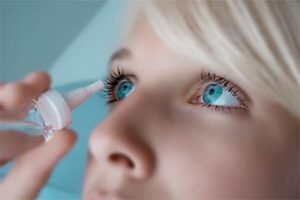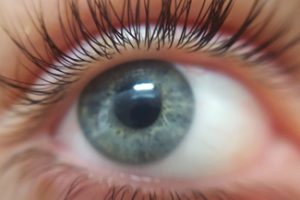
Spring Dry Eyes
Spring is a time of renewal, when the harsh winter is just a memory and the outdoors seem to beckon us to go outside. While spring may be in the air, so are allergens. Allergies during the spring season can cause dry eyes and have a particularly severe effect on people with Dry Eye Syndrome.
During the spring months, pollen, pet dander, mold, and dust can be found in the air. These airborne allergens can trigger uncomfortable reactions like itchy, red, and watery eyes, as well as sneezing and sinus congestion. At The Practice Name Dry Eye Center, we can offer you long-term relief for your seasonal dry eyes.
How Do The Seasons Affect Dry Eyes?
Although certain people with sensitivities to allergens may be more prone to allergic reactions, the seasons of the year can trigger these responses, too. In the winter, for instance, dry eyes can develop in people who live in climates with a lot of dry, cold air or strong winds. Sitting in direct aim of a heater may feel wonderful when it’s cold, but it can also dry out the eyes. In the summer when the heat is intense and people run their air conditioning systems regularly, dry eyes can develop from being in the direction of cold air.
A 5-year study found that 21% of the 3.4 million visits to an eye doctor during that time were related to dry eyes. Each year, there was a peak during April, proving that there is a likely correlation between allergens and dry eye cases.
Common Symptoms Of Seasonal Dry Eyes
The most common symptoms of dry eyes in the spring are:
- Blurry vision
- Burning
- Gritty feeling
- Itchiness
- Redness
- Stinging
- Soreness
- Watery eyes
It may seem odd, but watery eyes are a frequent symptom of dry eyes. It’s the body’s way of trying to self-heal the dryness by releasing excess tears, a condition called Keratoconjunctivitis Sicca (KCS). This condition gives some relief, but because these tears contain an inadequate amount of water, the relief is temporary and more long-lasting options are needed.
If you’re experiencing any of these symptoms, schedule an appointment with The Practice Name Dry Eye Center. We have the knowledge, years of experience, latest technologies, and effective solutions to give you relief for your dry eyes this spring season.
Relief For Dry Eyes In The Springtime

Dry Eye Doctor Name treats patients from all over CITY 1, State who are suffering from seasonal dry eyes. Depending on your specific case and the intensity of your symptoms, the doctor may recommend daily artificial tears or lubricant eye drops to alleviate the pain. These can stimulate your eye’s natural tear production to moisturize the eyes and provide comfort. In some cases, prescription drops or steroids can produce similar results.
For patients with severe types of dry eyes, the doctor may talk to you about punctual plugs. These are tiny devices that are inserted inside the tear duct. They block your tears from draining out, which forces them to stay in your eye, coating and moisturizing the area.
Have you heard about scleral lenses? These are contact lenses that are made from rigid materials and contain a tiny pool of water, which provides moisture to dry eyes. Scleral lenses have a large diameter that covers the entire sclera (white part of the eye) without touching the cornea, so they can fit more comfortably. Because each person’s eye is unique, scleral lenses must be custom-fitted for each patient.
When It’s More Than Allergies
If your symptoms persist long after spring is over, and especially if they worsen, this may indicate signs of a more serious eye condition.
Examples can include any of the following:
- Blepharitis (inflamed eyelids)
- Conjunctivitis (pink eye)
- Corneal Abrasions
- Dry Eye Disease
- Styes (an oil gland infection that causes a bump in the eyelid
We hope you take the time to enjoy this spring season. Should you experience any visual discomfort or are naturally prone to dry eyes, contact Dry Eye Doctor Name and the caring staff at The Practice Name Dry Eye Center. We’ll examine your eyes and discuss your personal needs to create an action plan that’s right for you.































